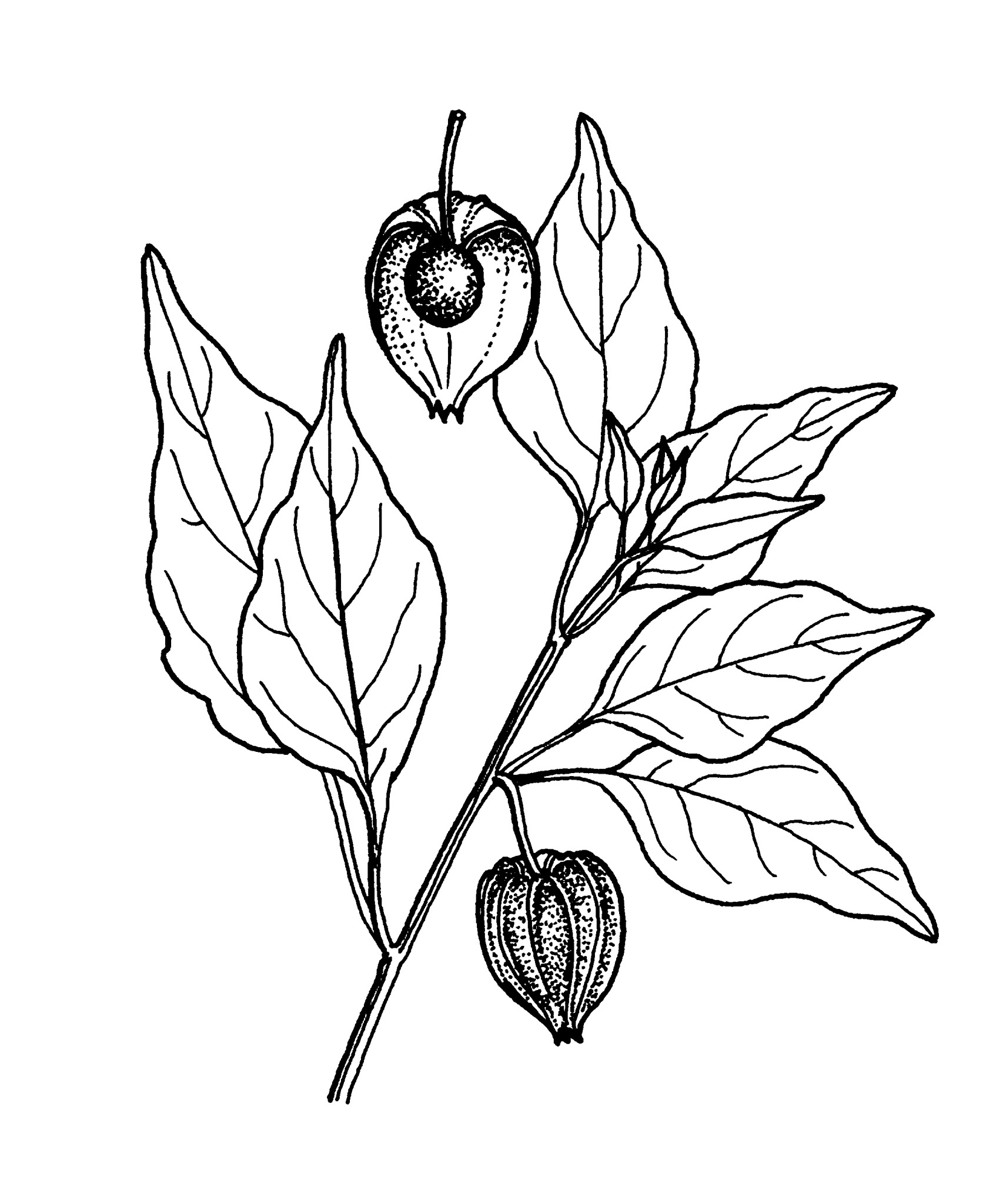
Greek physallis — bladder, referring to the balloon-like, inflated fruiting calyx.
Annual and perennial herbs and shrubs. Leaves alternate, 1-3 per node but not opposite; paired leaves of different sizes, entire, toothed or lobed, stalked. Flowers bisexual, regular, solitary in leaf and stem axils. Calyx 5-lobed, tubular to bell-shaped, enlarging in fruit. Corolla broadly bell- to wheel-shaped, usually yellow with dark spots towards the base, the wide-spreading lobes shallowly cut. Stamens 5, attached at the base of the corolla. Ovary 2-chambered. Fruit a stalkless, spherical berry enclosed in the inflated calyx.
Seven species have become naturalised in Australia to varying degrees, as weeds of waste and cultivated ground, spreading by invasive rhizomes.
Annuals by seed, perennials by division or seed.
Several species are cultivated for their edible fruits.
Colourful inflated calyx.
About 80 cosmopolitan species with 1 species, P. minima, possibly endemic to Australia.
Waterfall (1958, 1967), Symon (1981a), Martinez (1998).
Source: (2002). Solanaceae. In: . Horticultural Flora of South-eastern Australia. Volume 4. Flowering plants. Dicotyledons. Part 3. The identification of garden and cultivated plants. University of New South Wales Press.
